Is a Michigan energy firm using dark money to influence California’s climate plans?
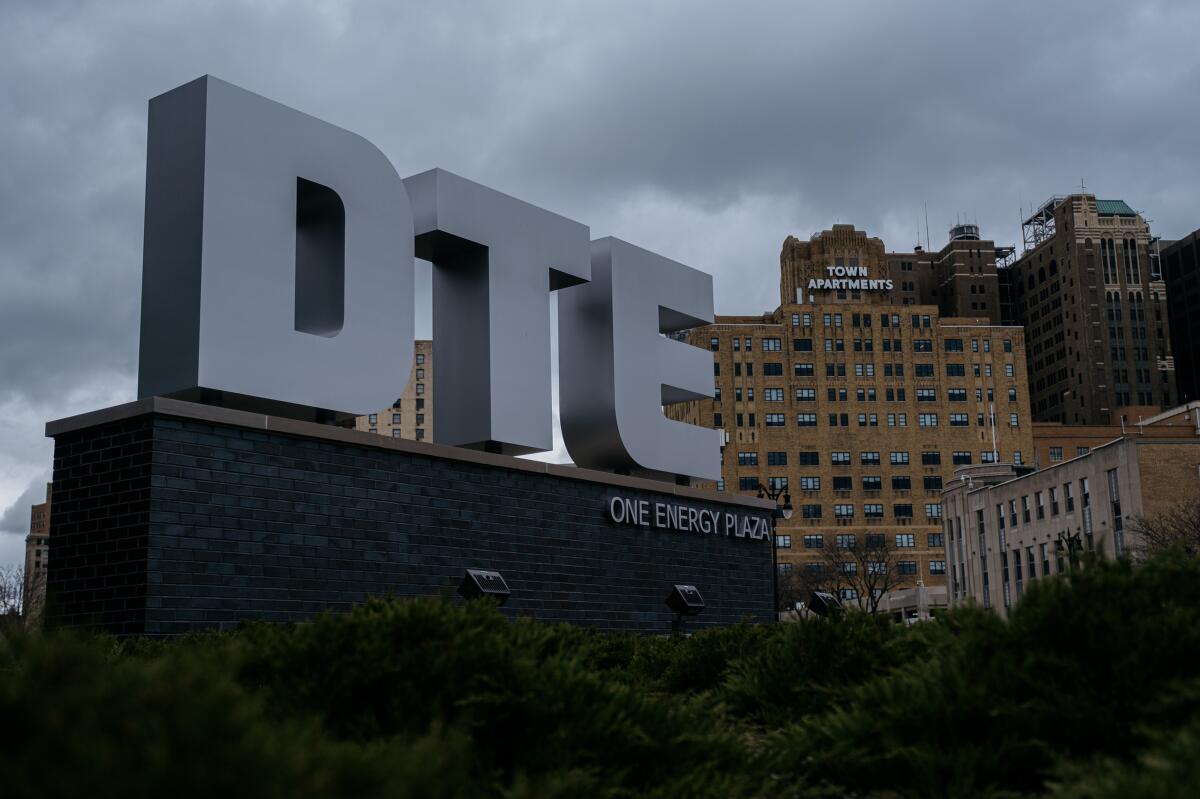
- Share via
This is the June 23, 2022, edition of Boiling Point, a weekly newsletter about climate change and the environment in California and the American West. Sign up here to get it in your inbox.
For all of California’s groundbreaking climate policies — the 100% clean energy mandate, the goal of ending gasoline-vehicle sales by 2035 — there’s still a lot of uncertainty over how the Golden State will zero out its planet-warming carbon emissions.
The California Air Resources Board is working on that. The agency is holding a hearing today on its next five-year “scoping plan” — a key document outlining strategies for slashing emissions across the economy, from oil refineries to the electric grid.
But many climate activists see the agency’s draft plan as wildly inadequate. Seventy-three groups vented their concerns in a letter this month, saying the plan would allow fossil fuel combustion to continue for far too long — in part by allowing some carbon emissions to be captured at polluting facilities and stored underground. Critics say the technology is largely unproven and would leave front-line communities vulnerable to dangerous pollution.
The Air Resources Board expects carbon capture to play a small but useful role in the climate fight. To support that view, the agency cites research from sources including Lawrence Livermore National Laboratory, a federal research lab in the Bay Area.
It turns out, at least some of Lawrence Livermore’s carbon capture research was funded by a dark-money group with ties to an out-of-state energy company — a company that stands to benefit if California incentivizes the technology.
Let’s take a quick spin through the documents backing up that statement, which were shared with me by the Energy and Policy Institute, a fossil fuel industry watchdog.
The first document is a tax filing from the Livermore Lab Foundation, a 501(c)(3) nonprofit that raises money to support the national lab’s research. The foundation disclosed that, in 2020, it received a $250,000 grant that allowed it to “survey more than 1,200 residents in the San Joaquin Delta region and Kern County on their views on climate change, carbon neutrality and carbon capture and storage.” The survey results “are shaping an outreach toolkit to provide stakeholders, community leaders and educators with the science behind carbon neutrality as well as societal benefits,” the foundation said.

The $250,000 grant came from a 501(c)(4) nonprofit called the Clean and Sustainable Energy Fund, aka the CASE Fund — which brings us to the second document. In its own tax filing, the CASE Fund said it gave $700,000 to the Livermore Lab Foundation in 2020 — one of just two grants it made that year, and by far the larger of the two.
So who’s behind the CASE Fund? The group doesn’t have much of an internet presence. But it noted in its Form 990 tax filing that all $3 million in funding it received in 2020 came from a single organization: Michigan Energy First.
And here’s where the mystery begins to get less cloudy.
Michigan Energy First is another 501(c)(4) nonprofit, and it won’t say where its funding comes from. But Renze Hoeksema, who’s listed as the group’s president in its 2020 tax filing, is also vice president of corporate and government affairs for DTE Energy — a Detroit-based company that serves millions of utility customers in Michigan and owns power plants across the country.
Michigan Energy First has a long history of going to bat for DTE’s policy priorities, as various journalists have documented. Of the group’s four directors in 2020, three were current or former DTE employees. Similarly, three of the CASE Fund’s five directors in 2020 worked for DTE — including Hoeksema, who’s listed as that organization’s president, too.
Why would a Michigan energy company care about carbon capture and storage in California? Possibly because DTE owns several generating stations in California, including biomass plants in Bakersfield, Woodland and at the Port of Stockton.
Those biomass plants take “woody waste” from farms and cities and burn it to generate electricity. And they could bring in revenue for DTE for a long time — especially if they’re outfitted with equipment to capture the carbon emissions they generate.
In an April 2021 presentation outlining DTE’s “California Carbon Storage Initiative,” the company explains how federal tax credits and state incentives could make carbon capture and storage “commercially viable for the first time.” The presentation highlights DTE’s California assets and describes the benefits of capturing carbon from biomass plants. It also notes that the Sacramento-San Joaquin River Delta region’s “unique geology” makes it ideal for storing carbon in underground rock formations.
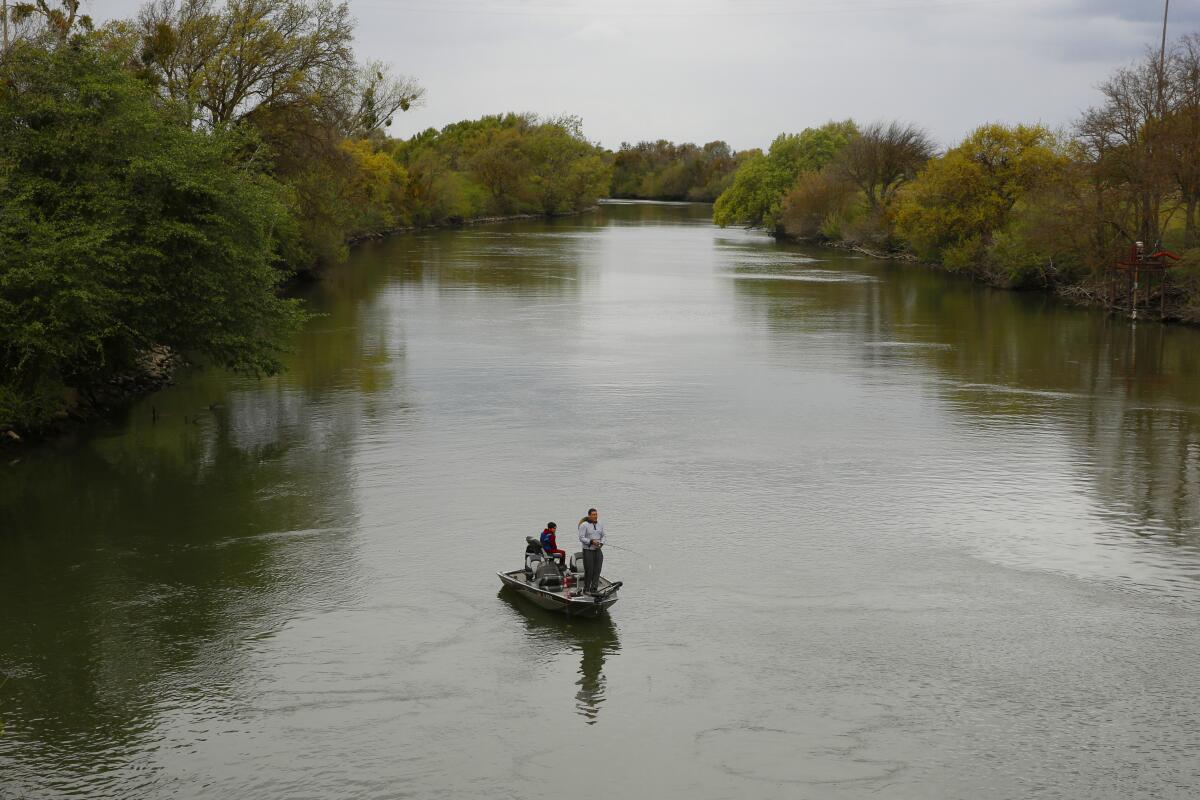
So it makes sense why a group with ties to DTE would want to fund research surveying people who live in that region about their views on climate change and carbon capture. That information could be valuable for persuading policymakers and the public to support carbon capture and storage projects.
And maybe those projects are a good idea. Many researchers say carbon capture will be crucial for staving off the worst dangers of the climate crisis, alongside a massive renewable energy buildout. Pairing biomass with carbon capture is often considered especially valuable because the woody material being burned — farm waste, for instance — actually pulled carbon out of the atmosphere as it grew. If that carbon is ultimately captured and stored underground, the overall process is “carbon negative.”
Again, environmental justice groups aren’t so optimistic. Daniel Ress, a staff attorney with the Center on Race, Poverty and the Environment, which has offices in the San Joaquin Valley and the Bay Area, told me that even if carbon emissions can be captured and stored — he’s skeptical — biomass plants are “really horrible sources of local pollution.” Although the facilities aren’t quite as bad as farmers burning agricultural waste in open fields, Ress said, they concentrate all the pollution in one place.
“If you burn everything in one spot, you’ve taken that front-line community and chosen to sacrifice it,” Ress said. “These facilities aren’t in rich white communities — they’re in low-income communities of color.”
Climate justice activists worry that the Air Resources Board’s scoping plan could lead to new financial incentives for carbon capture, helping polluting facilities such as DTE’s biomass plants stay open indefinitely.
And that gets us back to the national lab. The Air Resources Board’s scoping plan draft cites a Lawrence Livermore report to support the statement that underground rock formations in the Central Valley “represent world-class [carbon dioxide] storage sites” that could support a great deal of carbon capture.
As far as state officials are concerned, there’s not a lot to see here. When I asked Air Resources Board spokesperson David Clegern about the CASE Fund’s support for some of Lawrence Livermore’s work, he told me his agency expects carbon capture and storage to account for less than 2% of emissions reductions by 2045. The agency isn’t counting on biomass plants for any of those reductions, although it could still create strategies to incentivize carbon capture at biomass plants later.
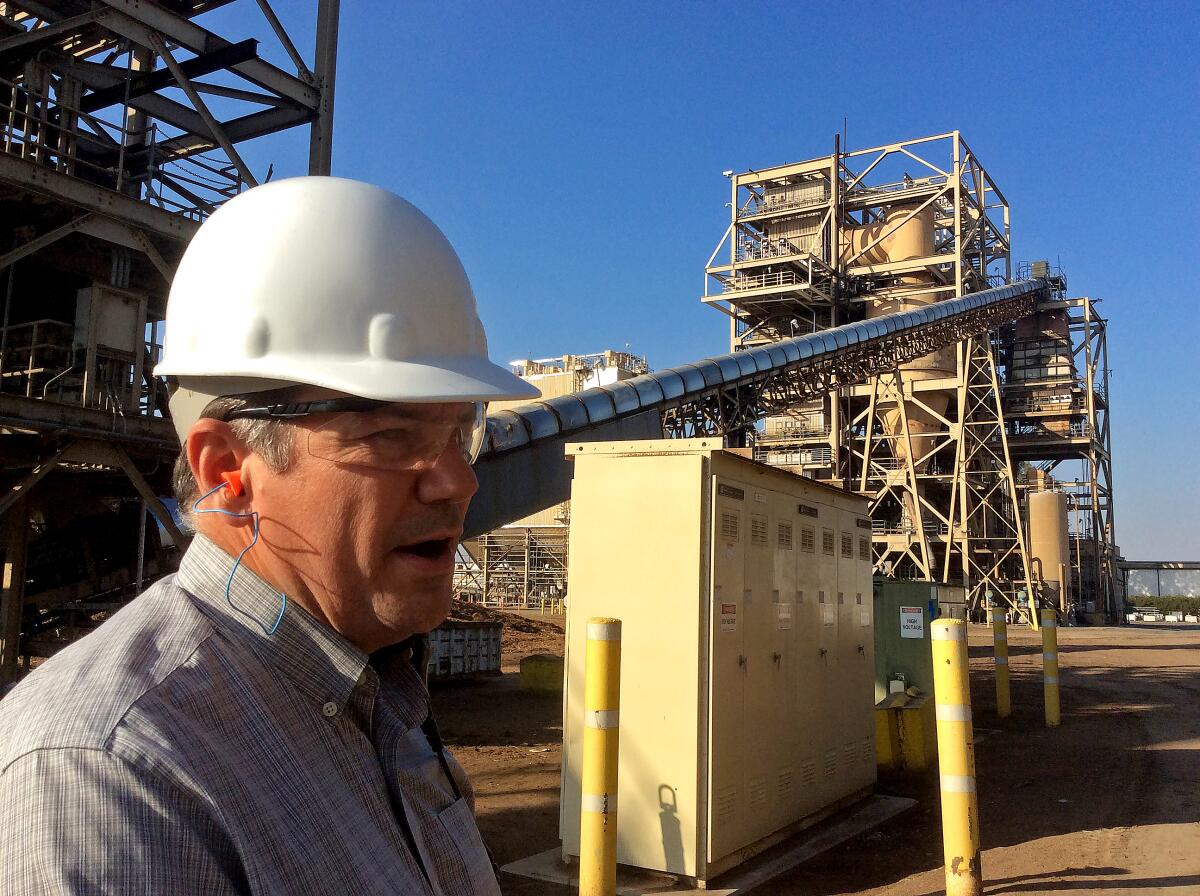
Clegern also noted that carbon capture “has been a point of discussion for many years.” He said the national lab’s findings on potential sites for carbon storage are nothing new, pointing me to similar research dating back to 2008.
“We know that research institutions like [Lawrence Livermore] and universities can be funded by private sector dollars,” Clegern said in an email. “When we cite a report, it is not a blanket endorsement of the entire document.”
I also heard from Lawrence Livermore spokesperson Breanna Bishop, who told me the CASE Fund didn’t provide financial backing for either of the reports dealing with carbon capture that have been cited by state officials.
At the same time, both of those reports list at least one DTE employee among the many reviewers. And Bishop wouldn’t disclose whether the national lab has received other funding from CASE, Michigan Energy First or DTE, saying, “We do not typically disclose details of specific contracts or sponsors unless announcing published results.”
Lawrence Livermore researchers “are bound by strict standards of scientific conduct, and contractual relationships do not influence our work, conclusions or public messaging and posture,” Bishop said in an email.
What about the rest of the $700,000 the Livermore Lab Foundation got from the CASE Fund in 2020? Sally Allen, the foundation’s executive director, told me via email that those funds “have been used to develop both the Carbon Cleanup Initiative website and videos as well as the educational toolkit.” Designed for teachers to use in their classrooms, the education toolkit includes an activity for students to learn about “Carbon Capture and Storage in the Delta or Kern Region.”
DTE’s carbon storage presentation describes “community acceptance” of these projects as “imperative.”
Hoeksema, the DTE executive who serves as president of the CASE Fund and Michigan Energy First, told me CASE was “impressed with the science and research” in the national lab’s “Getting to Neutral” report and “gave a gift to the [Livermore Lab Foundation] to help disseminate that report to the public.”
“This is vital work and holds huge potential in California and elsewhere to enable the removal of carbon from the environment,” he said in an email.
Hoeksema didn’t answer my question about whether the Lawrence Livermore research funding originated with DTE, saying only that while the CASE Fund “works with other groups interested in responsible energy policy, such as DTE Energy and other energy providers, the CASE Fund has no formal relationship with any other entity.”
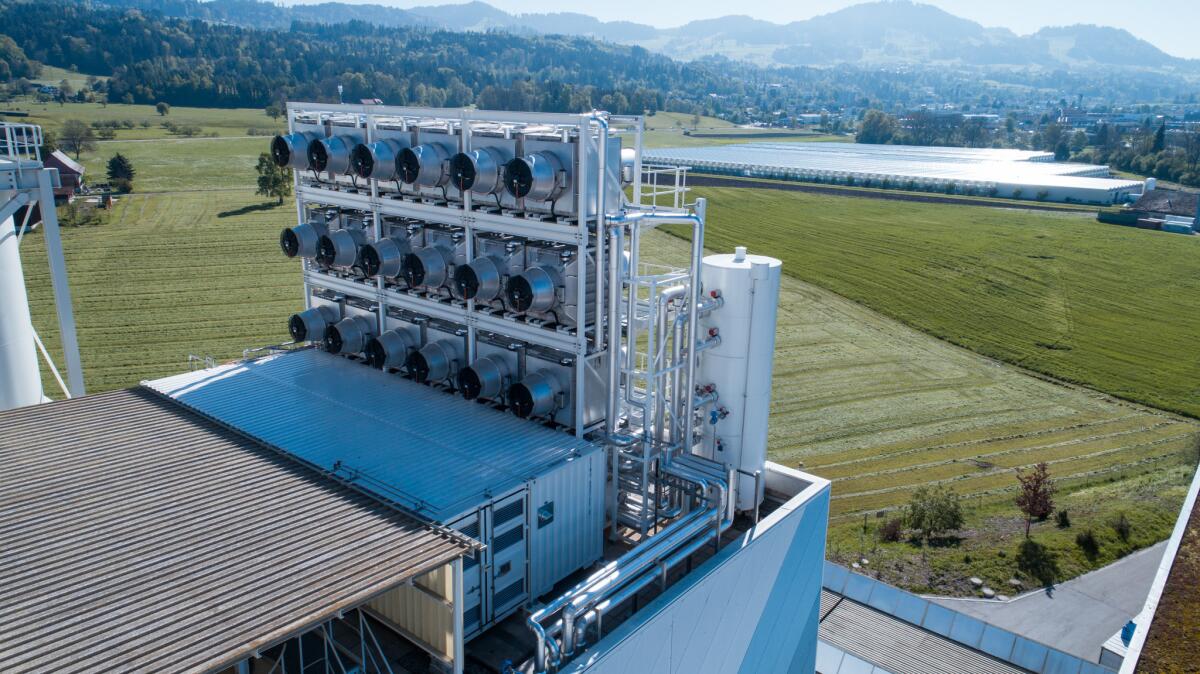
DTE spokesperson Pete Ternes told me the company “cannot speak for CASE or Michigan Energy First.” He added that DTE “is on the record saying that we believe we can achieve an 80% reduction in carbon emissions with existing technologies including wind and solar,” with the remaining 20% coming from other technologies, including carbon capture.
“We encourage new developments and government support in those areas,” Ternes said in an email.
At least in theory, there’s nothing wrong with energy companies funding research that might support their profit-driven priorities. There’s a whole lot of climate-related stuff that deserves study, and not enough government money to go around.
I also doubt that many independent scientists are intentionally corrupting their research to benefit corporate backers. It’s a lot more likely that companies are choosing to fund researchers whose existing body of work lines up with their priorities.
But as government officials in California and around the world craft climate policies with far-reaching implications, it’s important to understand which corporate interests may be shaping their worldviews, however subtly.
Lawrence Livermore is far from alone in this discussion — across the country, there’s growing debate over the role of energy companies in funding academic and other research. In my own reporting, I’ve scrutinized the Energy Futures Initiative, a project of Obama-era U.S. Energy Secretary Ernest Moniz that has published reports sponsored by fossil fuel companies. Those sponsors include Southern California Gas Co., which has also funded research projects at Lawrence Livermore.
Moniz’s initiative, meanwhile, was the other recipient of funding from the DTE-linked CASE Fund in 2020, getting $100,000.
None of this means research funded by energy companies is automatically wrong. But when crucial climate decisions are being made, we should know where the money is coming from.
The California Air Resources Board is taking public comments on its draft scoping plan through Friday. You can share your views here. A vote on the plan is expected later this year.
Here’s what else is happening around the West:
TOP STORIES

“The Colorado River Basin faces greater risks than any other time in our modern history.” So says Tanya Trujillo, an assistant secretary at the Interior Department, as quoted in this story by The Times’ Ian James explaining the state of play on the Colorado. Other watersheds face their own challenges. In Northern California, the state’s largest reservoir, Lake Oroville, is once again super low — but officials don’t think they’ll have to shut down the dam’s hydropower plant this year, my colleague Grace Toohey reports. We’ll have to wait and see. It doesn’t help that we may be looking at a third year of the drought-boosting La Niña weather pattern, as Paul Duginski writes. If you’ve already torn out your grass lawn and replaced it with drought-tolerant plants, and you’re still seeking more ways to conserve, Jeanette Marantos has great tips on capturing rainwater and using it to irrigate your garden.
A new report from the University of Chicago finds that air pollution — much of it from fossil fuels — removes more than two years from the average global life expectancy. That’s deadlier than cigarettes and far deadlier than terrorism, per Claire Parker’s story for the Washington Post. The numbers blew my mind, although there’s been so much research on the dangers of air pollution that they probably shouldn’t have. The report also found that California’s entire population breathed dangerous levels of fine particulate pollution in 2020 as wildfires blazed across more than 4 million acres. Details here from The Times’ Tony Briscoe.
California can’t decide whether to protect western Joshua trees as an endangered species. The state’s Fish and Game Commission deadlocked in a 2-2 vote last week and will try again in November, my colleague Louis Sahagún reports, after two commissioners disagreed with agency staff’s conclusion that the iconic plant is not in danger of extinction. One argument against listing Joshua trees as endangered is that doing so could block construction of large solar farms in the desert. Conservationists counter that there’s plenty of room for solar panels on rooftops, which is why it’s relevant that the California Public Utilities Commission is once again considering reducing incentives for rooftop solar systems, as Utility Dive’s Kavya Balaraman reports.
AROUND THE WEST
Los Angeles didn’t meet Mayor Eric Garcetti’s goal of planting 90,000 trees by 2021, managing just over 65,000 new trees over the last three years. But efforts to increase shade cover in low-income neighborhoods are moving full-steam ahead, my colleague Jaimie Ding reports, as city agencies partner with nonprofits and neighborhood groups to get locals engaged with planting and taking care of trees that can protect communities from extreme heat. On the other side of the state, newly minted UC Davis alumni are unhappy with how the university handled a bout of extreme heat at its commencement ceremony this month, which resulted in seven people being hospitalized and many more sickened by heat exposure. Details here from The Times’ Gregory Yee.
Most of Yellowstone National Park should reopen within the next two weeks, much faster than originally expected after record floods swept through the region. Here’s the story from Matthew Brown and Amy Beth Hanson at the Associated Press. But for parts of the park and some nearby towns, the recovery will be long. Gateway communities are preparing for an economic hit at just the time of year when tourism ramps up, generating income that typically sustains them through the winter. Montana Gov. Greg Gianforte, meanwhile, returned to the state after residents were surprised to discover he was on vacation during the floods.
Pacific Gas & Electric is expanding an “instant blackout” wildfire prevention program to cover about 3 million people. The program involves automatically shutting off circuits the moment a tree branch falls onto a power line, and PG&E says it’s done a good job of reducing ignitions, my colleague Christian Martinez writes. In related news, the Associated Press reports that the California Public Utilities Commission just fined PG&E $12 million (and Southern California Edison $10 million) for botching another type of fire-prevention power shutoff in 2020. Want to know more about how the CPUC is handling PG&E fire ignitions and other important issues? Then you’ll be glad to learn that in a major victory for transparency, an appeals court has ruled the agency can be sued if it doesn’t respond promptly to public records requests. Details here from Seth Rosenfeld at San Francisco Public Press.
POLITICAL CLIMATE
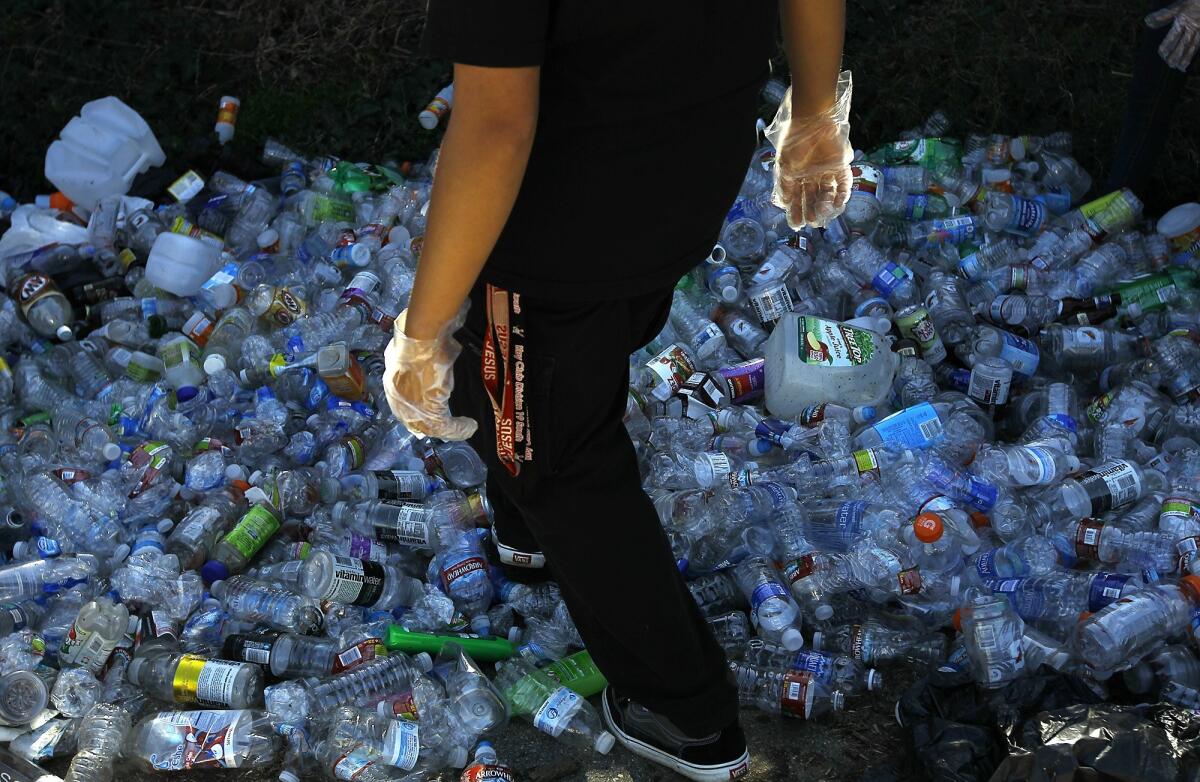
Californians may get to vote on a ballot measure banning single-use plastics, after all. A legislative compromise, negotiated with the plastics industry, is coming under fire for not banning polystyrene, which may prompt the ballot measure’s proponents to bring their proposal to voters instead of settling for the compromise bill, The Times’ Susanne Rust reports. In other legislative news, a bill that has passed the state Assembly would set ambitious targets for removing carbon from the atmosphere via “carbon farming,” per Emma Foehringer Merchant at Inside Climate News. There’s also lots of talk about feeding cows seaweed to reduce methane emissions from their burps. Grace van Deelen looks at the opportunities and challenges, also for Inside Climate News.
A bipartisan bill in Congress — House Minority Leader Kevin McCarthy is a coauthor — would spend $325 million protecting California’s giant sequoias from wildfire. It would also streamline regulations to speed up forest thinning and prescribed burns, Kurtis Alexander reports for the San Francisco Chronicle. In Arizona, meanwhile, it’s been 20 years since the state’s first modern megafire; the Arizona Republic’s Brandon Loomis and Zayna Syed looked at how the burned forest has changed since then, and how global warming could hurt efforts to prevent more megafires. Speaking of forests, will President Biden live up to his pledge to protect old-growth trees from logging, and keep loads of carbon out of the atmosphere? Conservationists say a timber sale the Forest Service is planning in Oregon would violate Biden’s pledge, as Anna Phillips writes for the Washington Post.
It’s official: Five Native American tribes will co-manage Bears Ears National Monument alongside the federal government. Details here from the Salt Lake Tribune’s Brian Maffly, who writes that the monument protects “a landscape in southeast Utah rich in scenic beauty, geological wonders, scientific treasures and Indigenous spirituality.” Bears Ears will be co-managed by the Hopi Tribe, the Navajo Nation, the Ute Mountain Ute Tribe, the Ute Indian Tribe of the Uintah and Ouray Reservation and the Pueblo of Zuni. There could be another national monument on the horizon in New Mexico, where local officials and advocates want to see greater protections for the Caja del Rio, a rugged volcanic plateau near Santa Fe, per Matt Dahlseid at the Santa Fe New Mexican.
THE ENERGY TRANSITION
The Biden administration approved oil and gas drilling permits on public land at a much higher clip in March and April, although permitting slowed down in May. Heather Richards at E&E News has a rundown on the numbers. In advance of the administration’s first sales of new onshore oil and gas leases, scheduled for this month, environmentalists are suing to stop the federal Bureau of Land Management from issuing 3,500 drilling permits in Wyoming and New Mexico, CNN’s Ella Nilsen reports. The fossil fuel industry says more federal leasing would help bring down gasoline prices, but it may not be so simple. California officials say they’re investigating the possibility of market manipulation, The Times’ Phil Willon reports. And even with increased production, the closure of many oil refineries could keep gasoline prices high, the Washington Post’s Evan Halper writes. President Biden has his own plan — he’s asking Congress to suspend the federal gas tax for three months, per my colleague Erin B. Logan.
There’s a wind and solar boom underway on Colorado’s Eastern Plains, fueled in part by a massive transmission buildout by the state’s dominant utility company, Xcel Energy. Some farmers and ranchers are eager for royalty payments from energy developers, while others are concerned about diminished views and other lifestyle changes, as Mark Jaffe writes in an excellent story for the Colorado Sun. Similar battles are taking place across the country, as I’ve been reporting, with huge consequences for fighting the climate crisis. In yet another example, the tension between solar farms and sage grouse conservation is heating up in Washington state, the Seattle Times’ Hal Bernton reports. At the national level, the Federal Energy Regulatory Commission is trying to make it easier for solar and wind farms to connect to regional electric grids more quickly, Canary Media’s Jeff St. John writes.
Under a new law, U.S. solar installers have to prove the polysilicon in their panels isn’t made with forced labor in China’s Xinjiang province. But will solar firms really make an effort to help end China’s brutal mistreatment of Uyghurs and other mostly Muslim minorities? That’s not so clear, Emma Foehringer Merchant writes for Canary Media. One step those companies could take: buying more polysilicon from U.S. manufacturers. Conveniently, a polysilicon manufacturer is preparing to restart a shuttered facility in Washington state — and its product will have lower carbon emissions, too, Maddie Stone writes for Grist. There could be a bit of a boom in U.S. manufacturing on the horizon. Four major renewable energy developers say they’ll commit to buying $6 billion worth of American-made solar panels — if only someone will make them. Here’s the story from the Wall Street Journal’s Phred Dvorak.
ONE MORE THING
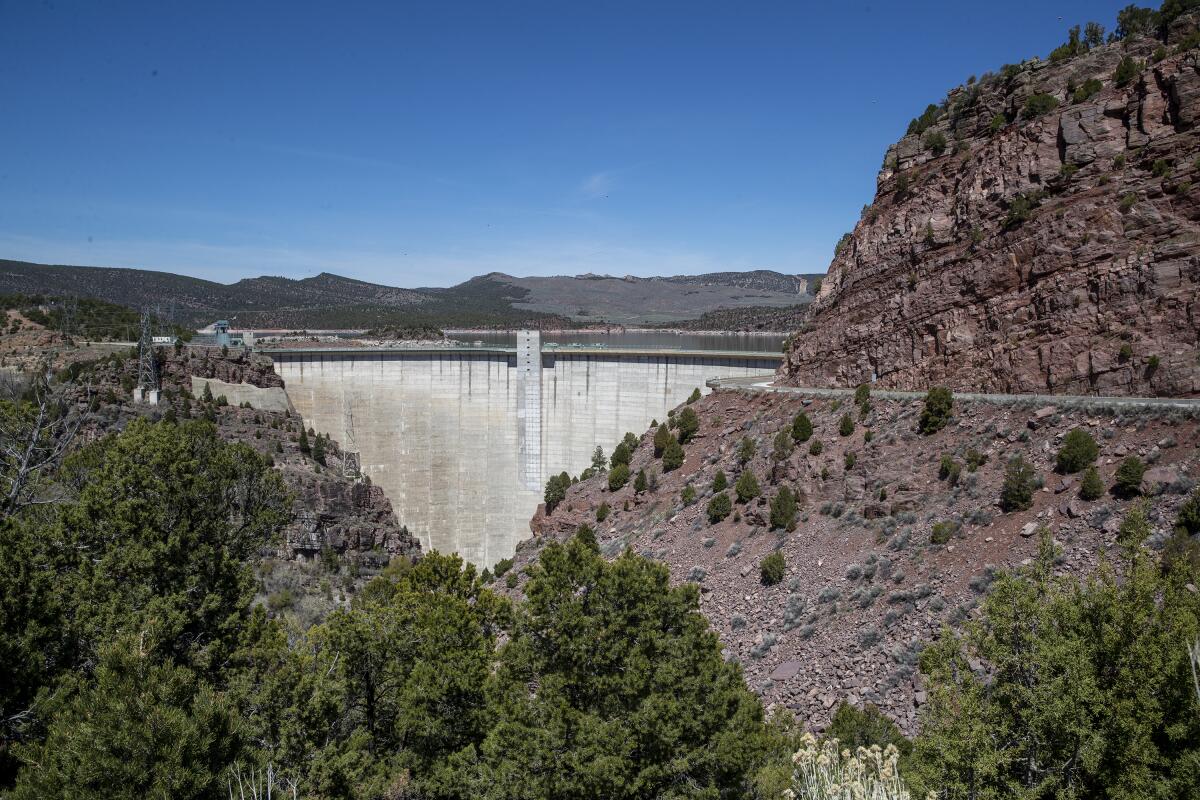
No matter how bad things get on the Colorado River, you can take this to the bank: There will always be dudes who think there’s a bunch of extra water available, and money to be made by selling it. This story by the Colorado Sun’s Chris Outcalt is Exhibit A.
The U.S. Bureau of Reclamation, whatever its flaws may be, at least recognizes the future looks a lot different from the past, in which it built giant dams across the West to fuel growth. Reclamation just celebrated its 120th anniversary, and I enjoyed this piece by Jennifer Yachnin for E&E News looking back at the agency’s history. I was especially interested to learn that Reclamation’s 1909 logo featured a small farmhouse and a farmer laboring in the field — a far cry from the dam and mountains in today’s logo.
We’ll be back in your inbox next week. If you enjoyed this newsletter, please consider forwarding it to your friends and colleagues.
For the record: Last week’s edition misstated the name of an E&E News reporter who wrote about coal ash ponds. Her name is Hannah Northey.






